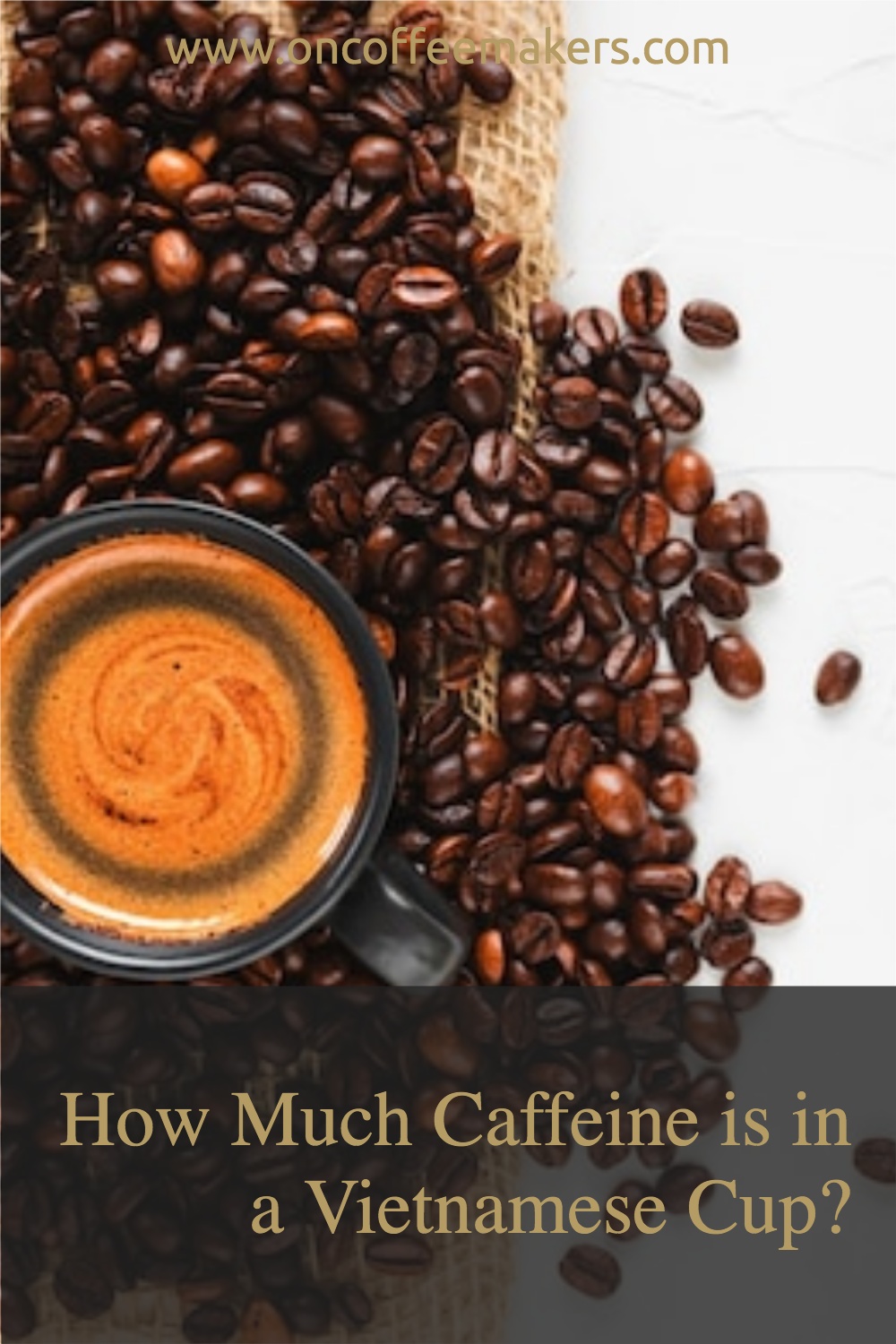How Much Caffeine is in a
Vietnamese Cup?
The high caffeine content of Vietnamese coffee makes it one of the world's strongest coffees.

Over 90% of the country's coffee is grown and used domestically, and it has a distinct peanut flavor.
A cup of Vietnamese coffee has 265mg of caffeine, which is equivalent to four shots of espresso!
A cup of the same stuff contains 205 mg. Approximately 190 mg of caffeine is in an 8oz dark roast of Starbucks.
Unlike other types of coffee beans, robusta beans are unique to Vietnamese coffee. As a result, it can be said to be more robust than the majority of other beans.
Stronger, nuttier, and darker than arabica, robusta is one of the most common types of coffee beans.
- It's mostly because of how it's made.
It has a lot more strength, boldness, and thickness than a drip coffee, and that makes it even better.
Even though Vietnamese coffee has a strong taste, it isn't as bright as some of its American counterparts, it is too coarse for a consistent taste.
- A stainless steel drip filter is used to brew Vietnamese coffee.
The filter is placed over the cup or glass from which you intend to drink, and you add the desired amount of ground coffee to it.
To get the grounds to expand, add some hot water to the filter and let it bloom for a few seconds. In order to get a more flavored brew, compress the coffee in the filter before adding the remaining water.
- If you want, you can make coffee in a French press instead.
With Vietnamese coffee, however, it is not advisable to use a normal coffee maker. As far as possible, we want to maintain it unadulterated.
Iced or hot, this beverage is delicious any way. Condensed milk is the only sweetener used in Vietnamese coffee, both hot and iced. It gives a touch of creaminess and sweetness to the coffee without detracting from its flavor.
- Vietnamese Coffee's Flavor
Due to its deeper roast, Vietnamese coffee typically has a strong and bitter flavor. In contrast to traditional milk, cream, and sugar, condensed milk is commonly used to lighten and sweeten coffee.
Because of the increased level of acidity than in a typical cup of coffee, this one has a distinctive flavor.
- Coffee's Caffeine Content in Vietnam
When comparing Arabica and Robusta coffee, the amount of caffeine is vastly different.
In a six-ounce cup of Arabica coffee, 75-130 mg of caffeine is present, whereas Robusta has 200 mg.
Almost two times as much! Vietnamese coffee is brewed using the drip technique, which necessitates a warmer environment to grow the beans. The more the caffeine level, the darker the roast.
For an 8-ounce cup of black coffee, the caffeine content ranges from 50 to 200 milligrams, depending on the brand.
The identical mug of Vietnamese coffee has 265mg of caffeine, which is the most on the list.
Isn't it obvious how much energy you'd gain in the evening, from consuming four or five espresso shots?
Unless you plan on staying up all night, avoid Vietnamese coffee.
- Vietnamese Coffee's Flavor
Due to its deeper roast, Vietnamese coffee typically has a strong and bitter flavor. In contrast to traditional milk, cream, and sugar, condensed milk is commonly used to lighten and sweeten coffee.
Because of the increased level of acidity than in a typical cup of coffee, this one has a distinctive flavor.
People prefer to drink the drip iced rather than hot because of its sour taste and thick consistency. Ice and condensed milk make it more palatable by diluting it.
Robusta beans aren't as popular in the United States since many Americans prefer the milder flavor of Arabica beans. Vietnam does produce Arabica beans, although the Robusta variety is more widely consumed.
By Douglas
Other Latte Art Questions
How to Steam Milk for Latte Art without Machine?
How to Steam Milk at home for Latte Art?
Other Questions about Coffee
How much does it cost to rent a espresso machine?
Questions not about coffee (but important to coffee)